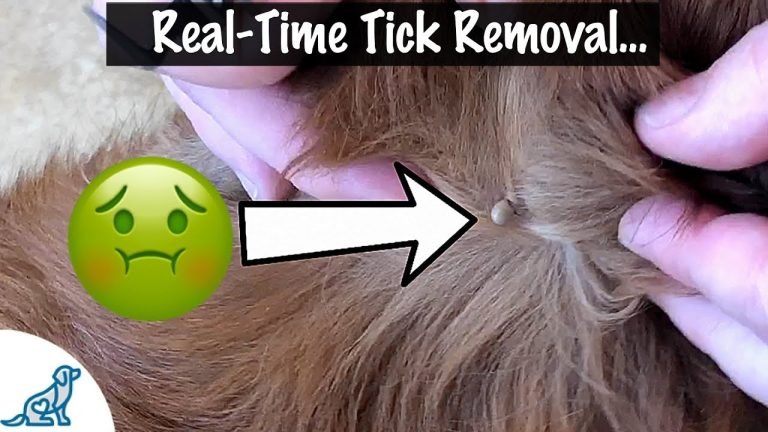Identifying Tick Eggs on Dogs: A Visual Guide

Have you ever wondered what tick eggs look like on a dog? Ticks are not only a nuisance for our furry friends, but they can also pose serious health risks. Understanding what tick eggs look like can help you identify and remove them before they become a problem. In this article, we'll explore the appearance of tick eggs on a dog and provide tips on how to effectively spot and remove them. Keep reading to learn more about protecting your pup from these pesky parasites.
How can you tell if a tick has laid eggs?
Have you ever wondered how to tell if a tick has laid eggs? Well, despite their small size, ticks can actually lay thousands of eggs. However, the good news is that tick egg nests are easier to spot than the ticks themselves. These egg batches, often brown and red in color, are translucent and not yet infectious.
Tick eggs may be tiny, but they are not to be underestimated. A single tick can lay thousands of eggs, and these egg nests are easier to spot than the ticks themselves. The eggs are typically brown and red in color, and appear translucent. So, if you're concerned about a tick infestation, keep an eye out for these telltale signs of tick eggs.
What is the appearance of an embedded tick on a dog?
If you're wondering what an embedded tick looks like on a dog, it's typically oval shaped, firm, and dark red or brown. Unlike moles or skin tags, ticks do not have hairs growing out of them. They tend to settle in your dog's skin folds, facial or groin area, or abdomen, so be sure to check these areas regularly for any signs of ticks.
It's important to be able to distinguish between an embedded tick and other skin irregularities on your dog. While ticks are firm and dark in color, moles and skin tags tend to be irregular in shape, soft, and lighter in color. Additionally, moles usually appear on the face and back of a dog, while ticks are commonly found in skin folds and areas with less hair.
Regularly checking your dog for ticks is crucial for their health and well-being. If you notice any oval-shaped, firm, dark red or brown markings on your dog's skin, be sure to carefully remove the tick and consult with your veterinarian for further guidance on tick prevention and treatment.
How can I tell if my dog has a tick bump?
If you suspect that your dog has a tick bump, look for a small, hard, brown lump on their skin. This could indicate that a tick is still attached. Additionally, be on the lookout for tick craters, small holes left behind by ticks that can be felt as a small lump under the skin and may be tender to the touch. Keeping an eye out for these signs can help you catch and remove ticks from your dog before they cause any further harm.
Spotting Tick Eggs: A Comprehensive Guide for Dog Owners
As a responsible dog owner, it's important to be vigilant in protecting your furry friend from ticks. One of the best ways to do this is by learning how to spot tick eggs. These tiny, oval-shaped eggs can often be found in dark, moist areas where ticks are known to frequent. By knowing what to look for, you can take proactive measures to prevent infestations and keep your pup safe and healthy.
When searching for tick eggs, be sure to thoroughly inspect your dog's fur, especially around the ears, neck, and underbelly. Ticks prefer warm, hidden areas to lay their eggs, so paying close attention to these spots is crucial. Additionally, keep an eye out for any small, black specks that may indicate the presence of tick eggs. If you do find any, carefully remove them and consult with your veterinarian for further guidance on tick prevention and control.
In addition to regular grooming and tick checks, consider using preventative measures such as tick repellent products and keeping your dog's environment clean and well-maintained. By staying informed and proactive, you can help protect your dog from the dangers of ticks and ensure they live a happy, healthy life.
Tick Eggs 101: A Visual Handbook for Dog Lovers
If you're a dog lover, then you know how important it is to keep your furry friend safe from ticks. One of the best ways to do this is to be able to identify tick eggs, which can be found in your dog's fur or in their environment. This visual handbook will provide you with the necessary knowledge and tools to spot tick eggs and take action to keep your pet healthy and happy. With clear and informative visuals, you'll be equipped to protect your beloved pup from these pesky parasites.
In conclusion, it is important for dog owners to be aware of what tick eggs look like on their pets in order to effectively prevent and treat infestations. By regularly checking their dogs for any signs of ticks and eggs, pet owners can ensure the health and well-being of their furry companions. Remember to consult with a veterinarian if you suspect a tick infestation, as they can provide expert advice and guidance on the best course of action. By staying informed and proactive, dog owners can keep their pets safe from the dangers of ticks.
